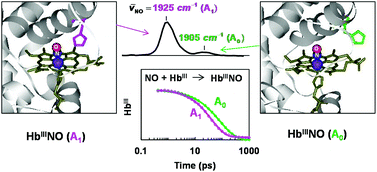Geminate rebinding dynamics of nitric oxide to ferric hemoglobin in D2O solution
Abstract
Femtosecond mid-infrared (

* Corresponding authors
a
Department of Chemistry and Chemistry Institute for Functional Materials, Pusan National University, Busandaehak-ro 63beon-gil, Busan 609-735, Korea
E-mail:
mhlim@pusan.ac.kr
Fax: +82 51 516 7421
Tel: +82 51 510 2243
Femtosecond mid-infrared (

 Please wait while we load your content...
Something went wrong. Try again?
Please wait while we load your content...
Something went wrong. Try again?
J. Park, T. Lee and M. Lim, Photochem. Photobiol. Sci., 2013, 12, 1008 DOI: 10.1039/C3PP50014D
To request permission to reproduce material from this article, please go to the Copyright Clearance Center request page.
If you are an author contributing to an RSC publication, you do not need to request permission provided correct acknowledgement is given.
If you are the author of this article, you do not need to request permission to reproduce figures and diagrams provided correct acknowledgement is given. If you want to reproduce the whole article in a third-party publication (excluding your thesis/dissertation for which permission is not required) please go to the Copyright Clearance Center request page.
Read more about how to correctly acknowledge RSC content.
 Fetching data from CrossRef.
Fetching data from CrossRef.
This may take some time to load.
Loading related content
